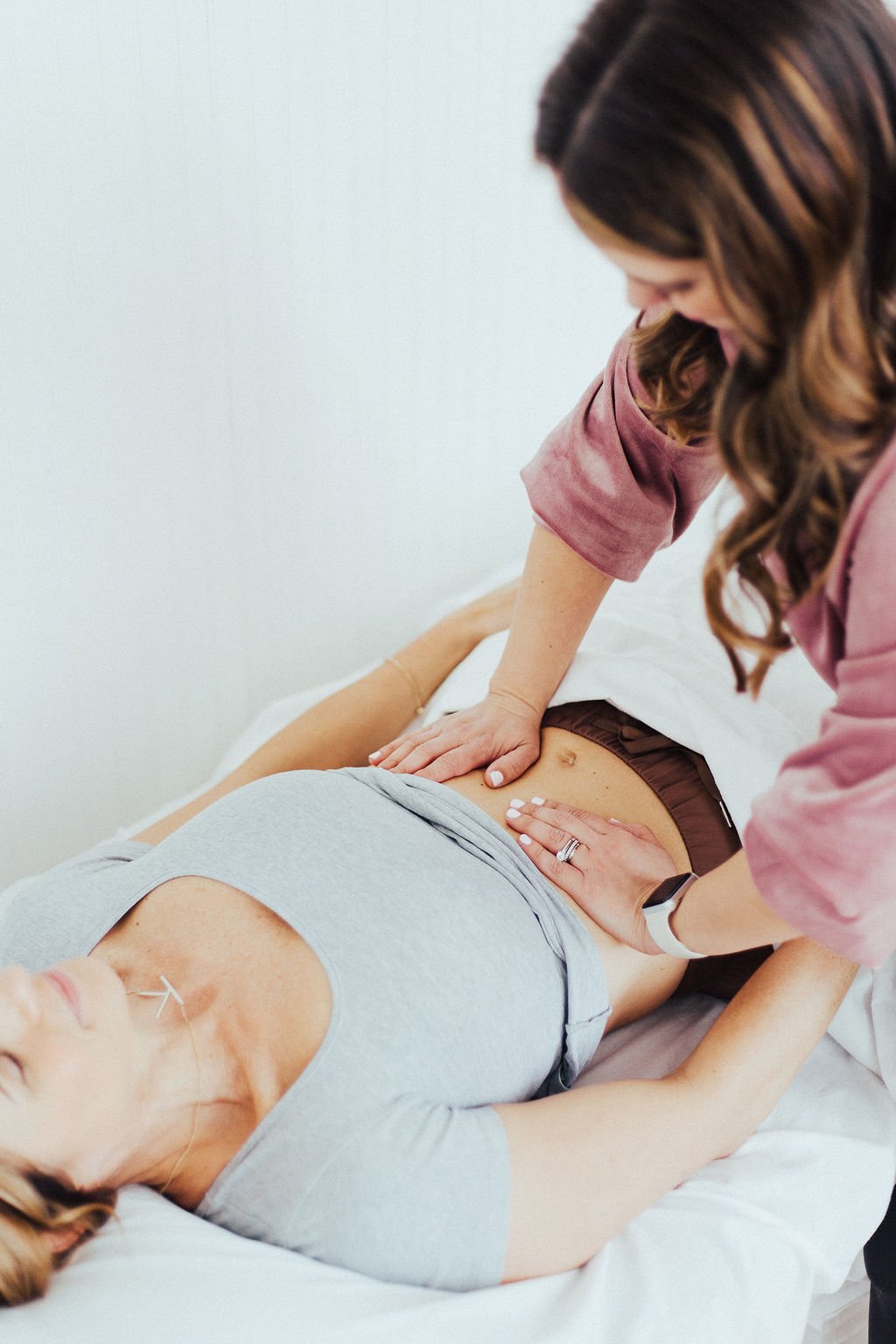
Maya Abdominal Therapy FAQs
What is Maya Abdominal Therapy?
Maya Abdominal Therapy (previously known as Arvigo Abdominal Massage) is based on the ancient Mayan techniques of abdominal massage.
This therapy is an external, gentle manipulation that helps to increase circulation and aid in optimal positioning of the internal organs of the digestive and reproductive systems. Improved alignment helps to restore healthy and optimal blood, lymph, nerve, and energy flow within the body.
Who is Maya Abdominal Therapy for?
Everyone benefits from the boost to their digestive tract and lymphatic system that this massage provides. There are additional benefits for people who struggle with more chronic or acute digestive or reproductive concerns, such as the following:
Crohn’s disease
IBS
Constipation
Bloating
Acid Reflux &/or Heartburn
Chronic Low Back Pain
Menstrual &/or ovulation pain
Menopause/Perimenopause discomfort
Ovarian cysts or Uterine Fibroids
Endometriosis
Infertility or those trying to conceive
How long is a session and what does it entail?
The first session lasts an hour and a half and begins with a review of your health history and concerns. The intake is extensive in order for the practitioner to get to know you and your individual needs. Please complete and send in your intake form before your first session date.
After reviewing the intake form there will be a hands on treatment. This looks like a regular therapeutic massage where you, the client, will get on a massage table (undressed to your comfort level, laying beneath blankets on the massage table). The chest and other areas not being worked on will remain covered at all times. The initial session concludes with self-care massage instruction. You will take this knowledge and skill home with you in order to perform the work on yourself between sessions. The self-care massage is one of the most important aspects of this work. We suggest that, if possible, you schedule at least two sessions within a month’s time. Subsequent sessions require an hour to 1.5 hours, depending on individual needs.
How Does Maya Abdominal Therapy assist with fertility and conception?
After the uterus is realigned to its optimal position, the improved circulatory dynamics and homeostasis support and enhance fertility.
How does Maya Abdominal Therapy help with abdominal surgery recovery (including hysterectomies)?
Abdominal therapy improves circulation in and around the area of the scar and allows for proper flow of the lymph, which often becomes blocked after surgery, resulting in swelling, burning and deep aching pains in the pelvis. By using abdominal therapy on a regular basis, scar tissue will be prevented from forming in the pelvis after surgery. Ligaments and other remaining organs are also benefited from improving circulatory flow to the pelvis.
How does Maya Abdominal Therapy help with digestion?
Many anxieties and emotional stressors are stored in our body's tissues and organs. Very commonly those stressors are stored in the organs of the digestive system. Those so-called "butterflies in your stomach" can lead to constipation, indigestion, heartburn, and gastritis. In extreme cases, these stressors may be precursors to more serious conditions including Irritable Bowel Syndrome (IBS), Gastro Esophageal Reflux (GERD), and Crohn's Disease. Over time, digestive distress can cause the small intestine and colon to twist and kink resulting in blockages in the flow of peristalsis. The surrounding fascia creates adhesions that reorient the positions of organs, impede proper blood flow and enzyme secretions, and cause pain. Maya Abdominal Therapy helps to reduce fascial adhesions to remove the blockages in the digestive tract. Often there is a dramatic improvement after just one session when combined with proper diet and self-care.
How does Maya Abdominal Therapy improve uterine health?
This external massage gently lifts and guides the uterus into its optimal position in the lower pelvis. The uterus is held in position by over 10 ligaments. Ligaments, when stressed or strained, cause the uterus to become mal-positioned. If the uterus is mal-positioned, women experience a multitude of symptoms.
What symptoms could improve with this type of therapy?
Painful or irregular periods; painful or irregular ovulation
Dark or brown blood at the onset and at the end of menstruation
Headache or migraine with period
Varicose veins of the legs and/or tired, weak or numb legs
Low backache; back pain with period
More serious imbalances including: Endometriosis, Uterine Fibroids and Uterine Polyps
PMS/ depression
Frequent urination; bladder infections, incontinence
Recurrent vaginal infections
Chronic miscarriages
Difficulty getting pregnant/Infertility
Painful intercourse
Chronic constipation
Difficult menopause
Why does this happen?
Injury to the sacrum or tailbone from a fall, car accidents, etc
Pelvic ligaments that have weakened due to overstretching during pregnancy and birth
High Impact exercise, running on cement surfaces, high impact aerobics, etc
Lifting & carrying heavy objects before or during menstruation and too soon after childbirth
Time and gravity
Past surgeries
Weak pelvic floor muscles
Chronic muscle spasm around the low back and sacrum
Emotional armoring from abuse at anytime in life
Is Maya Abdominal Massage recommended for all women?
Almost every woman, even those who have had hysterectomies, can benefit greatly from Maya Massage through improved circulation, lymphatic drainage and a decrease in the formation of scar tissue.
What conditions are contraindicated for Maya Abdominal Therapy?
Within the first six weeks following a normal vaginal delivery, or the first three months after a cesarean section
Immediately after pelvic or abdominal surgery (until a physician says it is safe to resume normal activities).
If cancer is present, or suspected anywhere in the pelvis.
If infection is present anywhere in the pelvis.
If pain or discomfort do not diminish beyond the sixth treatment.
